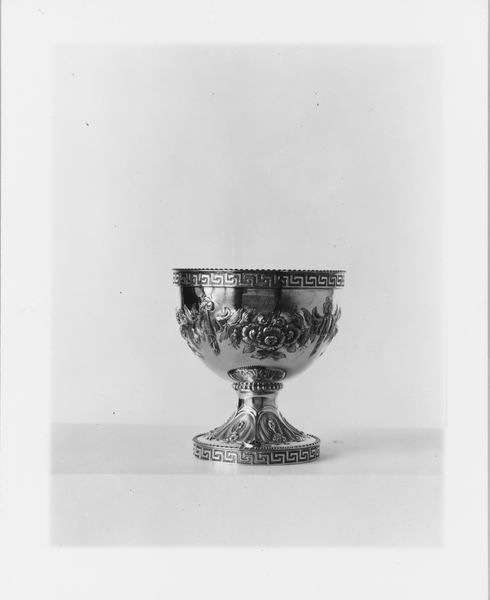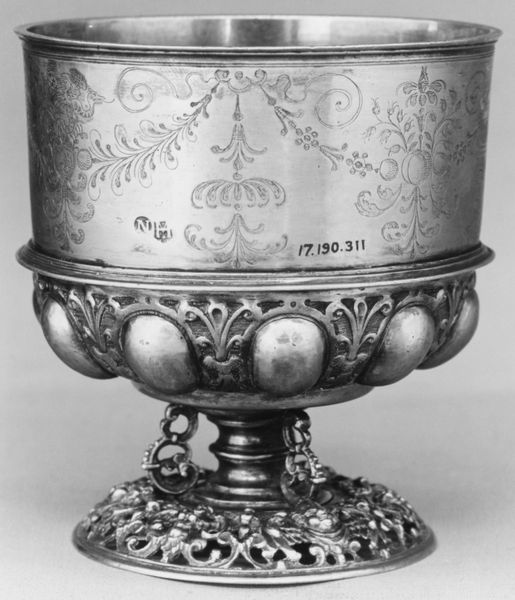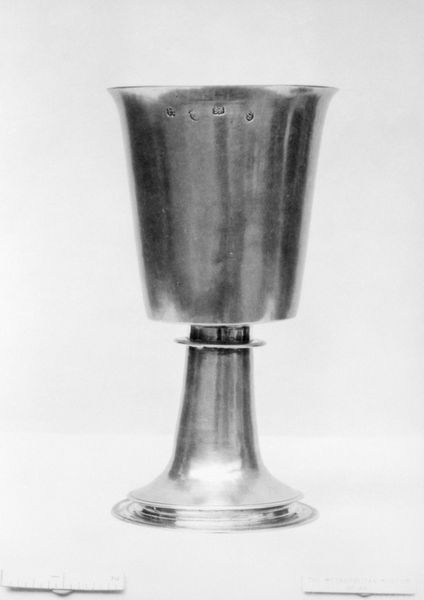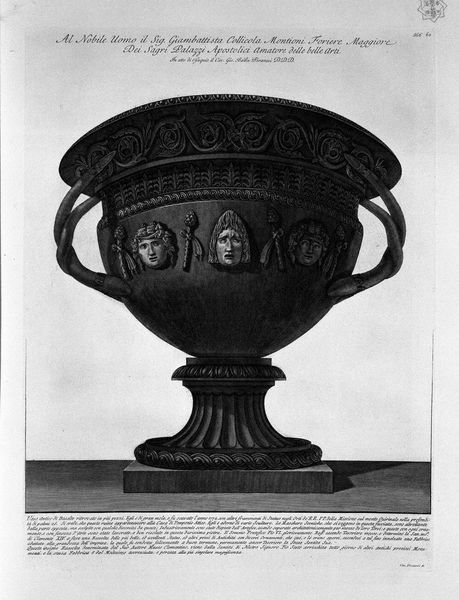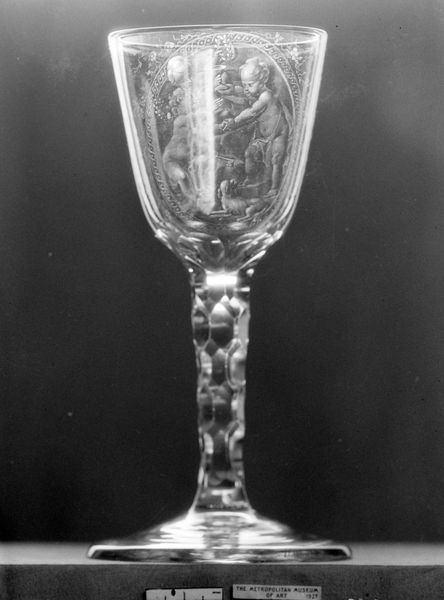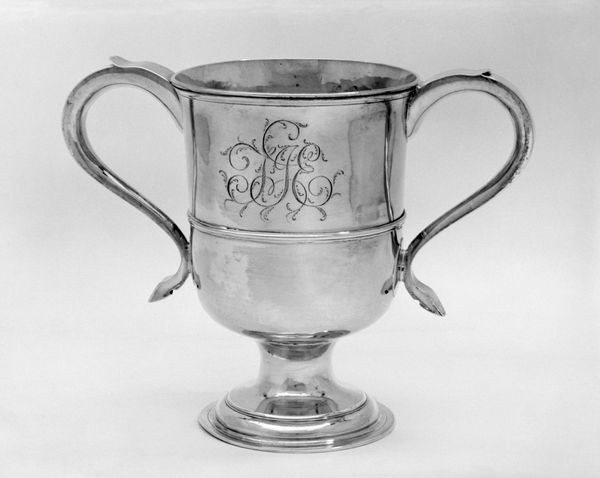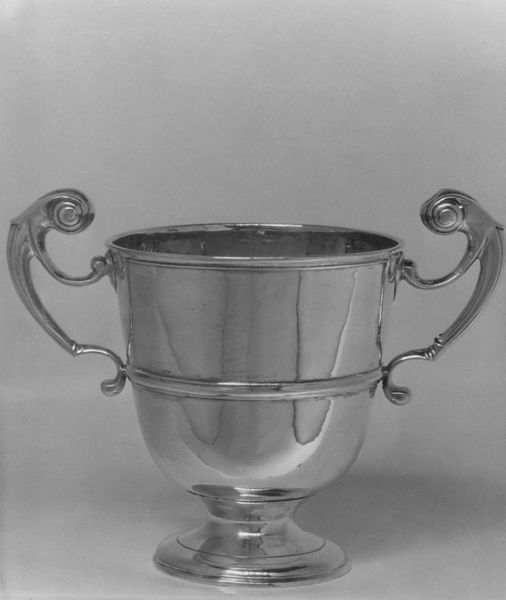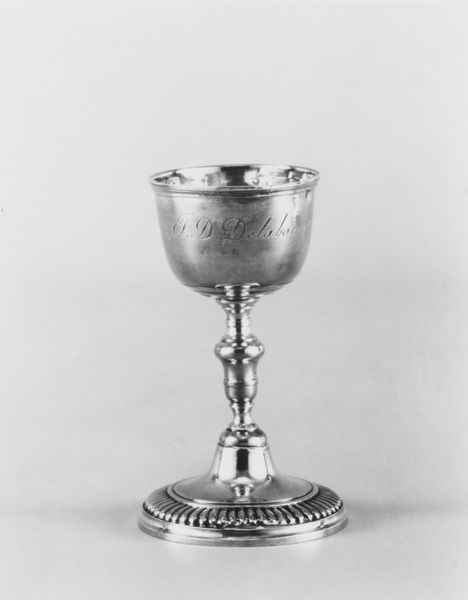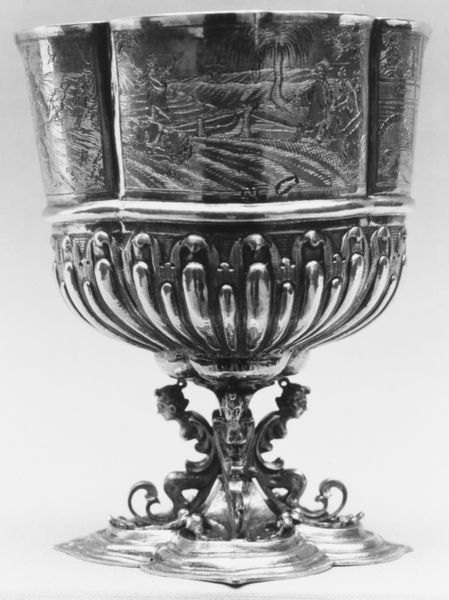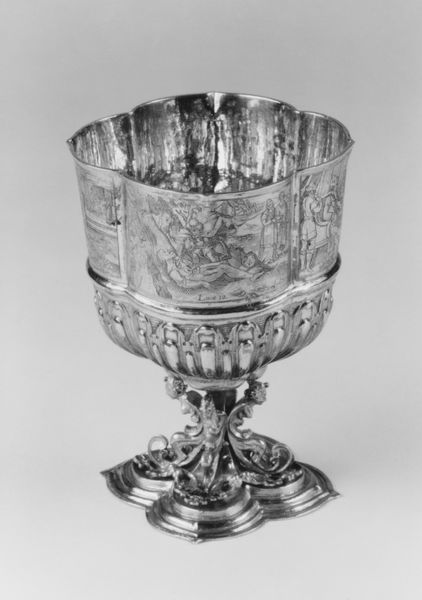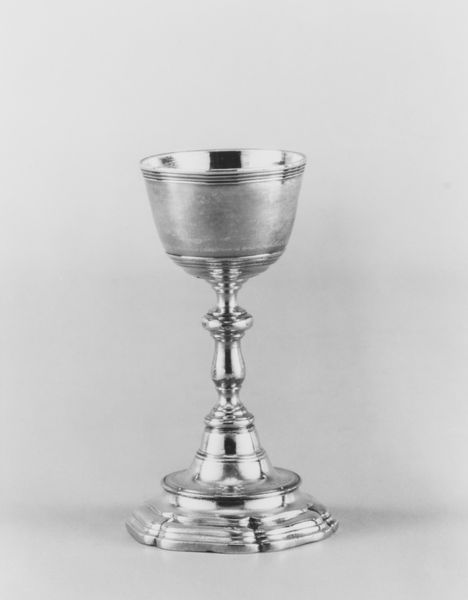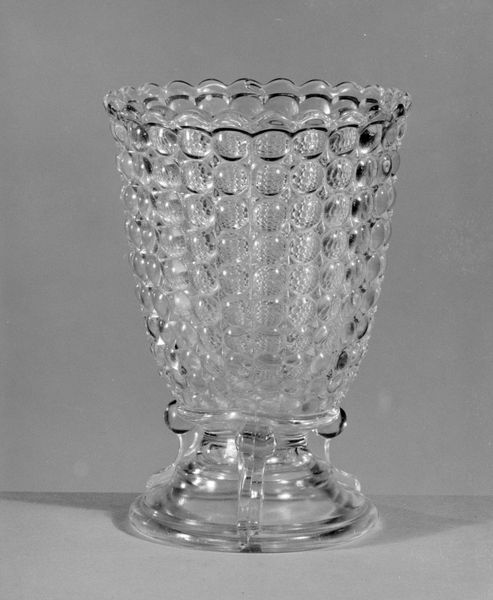
metal, sculpture
#
metal
#
sculpture
#
sculpture
#
black and white
#
monochrome
#
monochrome
Dimensions: H. 8 7/8 in. (22.5 cm)
Copyright: Public Domain
This chalice was made in the late 1700s or early 1800s by Timothy Bridgen, fashioned from Britannia metal, a pewter alloy. Britannia metal emerged in the late 1700s as a cheaper, lead-free alternative to traditional pewter. This chalice reflects the rise of industrial manufacturing, where specialized techniques and divided labor allowed for more affordable production. The metal would have been cast, then spun on a lathe, a process that requires skill and coordination to achieve such a smooth, consistent form. Notice the fine lines circling the base, a direct result of the spinning process. This chalice speaks to a shift in consumer culture. Objects like this became more accessible to a wider range of people, reflecting broader economic and social changes. By considering its material and making, we can see how this object bridges the gap between craft, design, and the larger forces of production that shaped its creation.
Comments
No comments
Be the first to comment and join the conversation on the ultimate creative platform.

